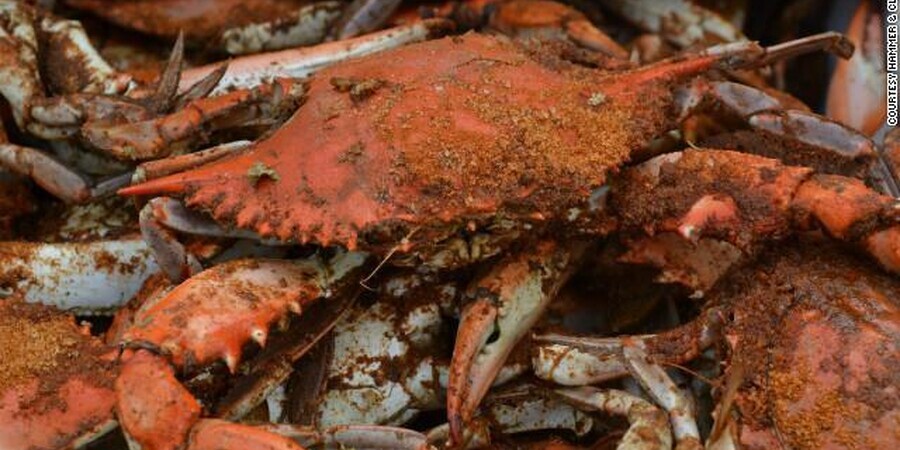Philadelphia, PA - Thank goodness for the lowly blue crab. What would our epicurean lives be without this deliciously savory crustacean. Yet often they do not get the respect they deserve.These small bluish crustaceans are harvested from the mid Atlantic region crab fishery in Chesapeake Bay to Florida and along the Gulf states as far west as Texas. In its scientific name, calli is Greek for "beautiful", nectes for "swimmer", and sapidus is Latin for "savory".
The Humble Blue Crab: A Delectable Delicacy Beyond the Lobster's Shadow
While the lobster often reigns as the king of seafood, the humble blue crab deserves a place in the culinary spotlight. This unassuming crustacean, often overshadowed by its more glamorous counterpart, offers a unique and delectable flavor experience that's worth savoring.
A Culinary Chameleon
The blue crab's versatility in the kitchen is one of its greatest assets. From Maryland-style steamed crabs to the rich and creamy crab imperial, this crustacean lends itself to a variety of dishes that showcase its delicate sweetness and briny notes. Whether you're indulging in a simple crab cake or a luxurious seafood boil, the blue crab delivers a flavor that's both satisfying and memorable.
The Art of Picking Crab
While some may bemoan the effort required to extract the meat from a blue crab's shell, the reward is well worth the work. With a little patience and practice, you'll be rewarded with succulent morsels of sweet, tender crab meat that are perfect for dipping in melted butter, Old Bay seasoning, or your favorite sauce.
From Sea to Table: A Closer Look at Blue Crab Meat:
- Lump Crabmeat: The most prized and expensive type, lump crabmeat is comprised of large, unbroken pieces from the body of the crab. Its delicate texture and sweet flavor make it perfect for crab cakes and salads.
- Backfin Crabmeat: A combination of lump and smaller flakes of white meat, backfin crabmeat is versatile and ideal for crab cakes, imperial dishes, and casseroles.
- Special Crabmeat: This consists of smaller flakes of white meat from the body, perfect for soups, dips, and stuffing.
- Claw Meat: The brownish meat from the claws is known for its rich flavor and is often used in soups and dips.
Blue Crab Facts
- Scientific Name: Callinectes sapidus, meaning "beautiful savory swimmer."
- Lifespan: Blue crabs typically live for 1-3 years.
- Maturity: They reach maturity in 12-18 months.
- Size: The largest recorded blue crab from Maryland measured an impressive 9 inches, although larger ones have been caught.
- Habitat: The Chesapeake Bay is a prime habitat for blue crabs, accounting for over 50% of the total U.S. harvest.
Whether you're enjoying a crab feast with friends or savoring a solitary soft-shell crab sandwich, the blue crab offers a unique and delicious experience. So don't underestimate this humble crustacean – it's a true culinary gem waiting to be discovered.
Share This Article on Social Media


